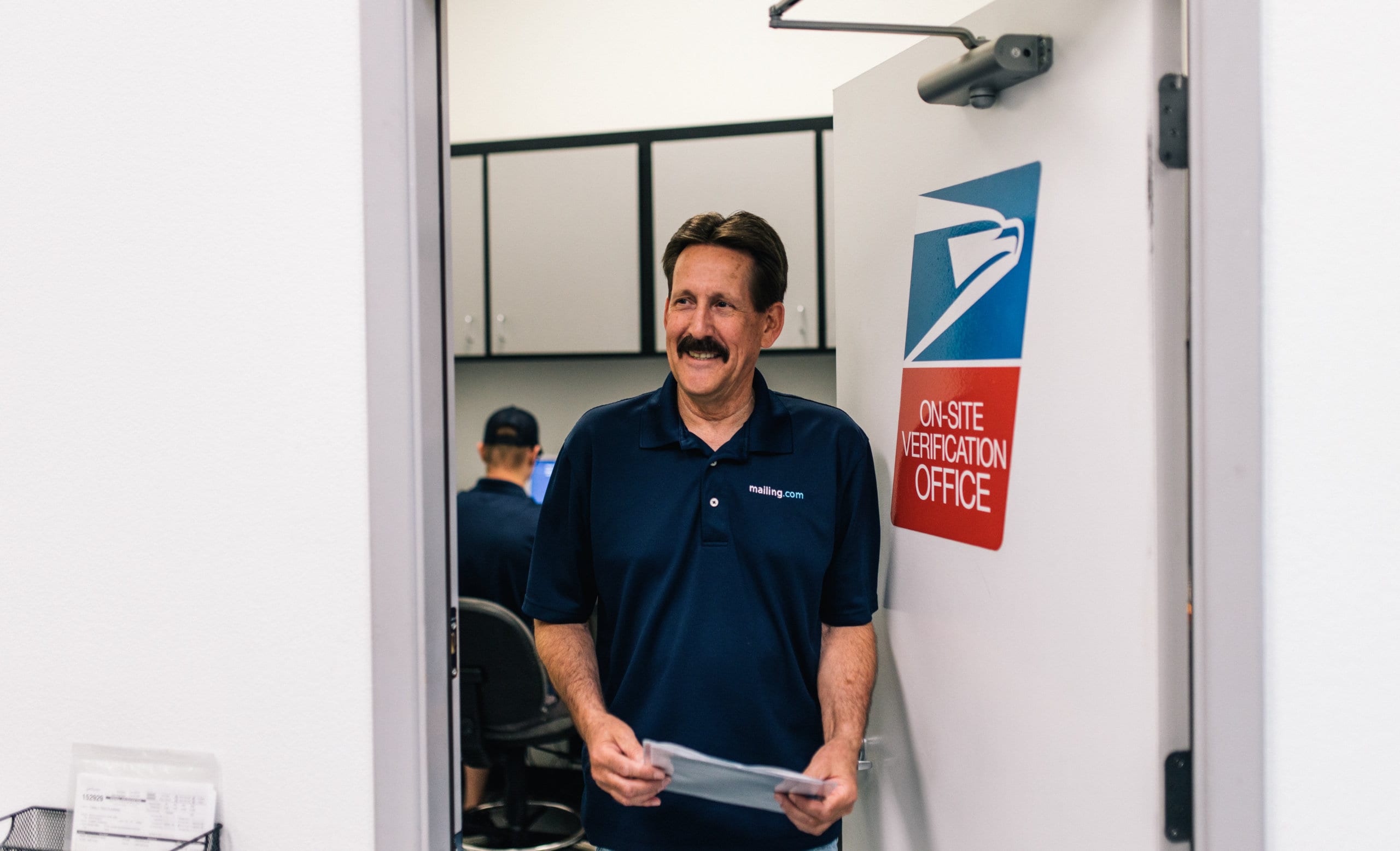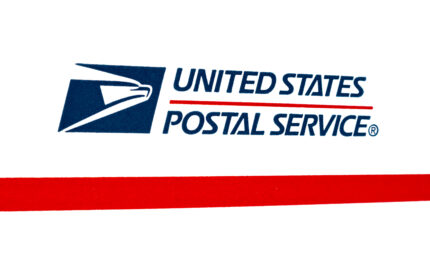On-site USPS Verification Is Your Secret Superpower
By Paul Bobnak | June 18, 2020

Creating and sending out interesting mail for clients is so much easier when you have USPS in-house verification on your direct mail team.
Technically, the office is called a Detached Mail Unit (DMU). It’s staffed by full-time postal service employees who basically have one job: to make sure that your company’s mail leaves your printer’s plant ready for entrance into the postal ecosystem and delivery to customers.
At mailing.com, we’re honored to be one of a select number of printing service providers with USPS under our roof. The large volumes of mail that we handle have helped us earn the opportunity to work closely with our partners to give your special mailing campaigns prompt and accurate attention. When your mail gets verified and accepted, it can skip steps, such as navigating regional USPS distribution centers.
But why should all of this matter to you?
For an insider’s perspective — and some helpful hints — we talked with Paul Byers, USPS Mailing Standards Specialist, Arizona/New Mexico District. He has 30 years of experience working with marketers, or, as he calls them, “team members.”
What the DMU does
The primary value of in-house verification is that it saves steps in getting your mail designed, printed, and mailed. DMU employees provide guidance to printers and marketers at all stages of the process. If your mail piece’s design or weight (among other things) does not meet postal rules, it could get rejected. You might need to reprint it to get into compliance, and that costs time and money. No one wants that.
“Rather than plow ahead on a vision blindly,” Byers said, you’ll need help with USPS regulations. Live, on-site consulting expertise leads to a more seamless process and less back-and-forth.
“The key component is the human element,” he said. Relationships develop, and, as a result, “discussions happen quickly and … [are] constantly evolving.”
“If you have someone on site, you’re constantly engaged” and won’t miss certain topics or opportunities for your mail. This is a real advantage in a smooth and less time-consuming production process.
Why balance creativity and efficiency
To be effective and achieve good ROI, your direct mail has to make tradeoffs between creativity or innovation and efficiency. Only you know what your priorities are before starting your campaign.
Remaining silent on rules and regulations is ultimately frustrating to the printer and marketer as well as USPS because “they’re in place to create success,” Byers said. Lots of considerations, such as time, product design and cost go into onsite verification.
As far as USPS is concerned, Byers said,“We’re partners, and we’re trying to create a winning experience. We have an obligation to be there for you and to be honest.”
When to start
To avoid distractions or surprises from your campaign’s marketing goals, Byers says, working with the DMU should start at the beginning of your direct mail planning. This builds confidence across the team.
“Communication is key” in building that relationship and day-to-day interaction, along with “getting to know how we can best help one another.”
What’s the most common problem?
In Byers’ experience, while printers and marketers encounter several challenges, “the most common is with the physical standards and the design.” For that reason, “that starting communication and base point” is so important in avoiding problems later down the line, he said, especially after a piece has already been created and printed.
“Early communication … [is needed] when you have something that may be a little more unique, more trend-setting, something [that] might be more challenging … maybe you’re trying to go outside the normal boundaries,” he said. “All these things are permissible” but, without early communication and input of both parties, you might limit your options.
Where to go next
What can companies do to facilitate growth for USPS (and themselves)? Besides continued marketing and advertising with direct mail, continuing innovation of ideas and concepts presents many opportunities.
Byers recommended that mailers take advantage of incentives the postal service offers to incorporate advanced printing and marketing techniques and technologies. Many products and services are available. To see if they could work, they only require more detail and sophistication in their creation, and “we have folks that are experts in those areas.”
“You’re really only limited by your imagination and your budget,” he said.
With tracking services to the piece level and the delivery address that give you data, there is amazing potential for doing far more with data to drive your direct mail. “It’s all out there, it’s all available,” he said.
“People don’t recognize the flexibility that is there … we need to start on the ground floor in partnership to work towards that end goal so we make sure we reach that without any interruption and create the very best results possible,” Byers said.
Wrapping it Up
With USPS in your printer’s building, your mail is in good hands. This partnership means no bottlenecks for your mail’s verification and acceptance.
At mailing.com, our postal experts will work closely with you and our friends at USPS to figure out your best creative options given your brand’s individual campaign goals and budget. Our strong relationship makes the process run accurately and efficiently, saving you time and money, and delivering peace of mind.
Please reach out to us! We’d love to show you how you can put today’s direct mail to work in your next campaign.


